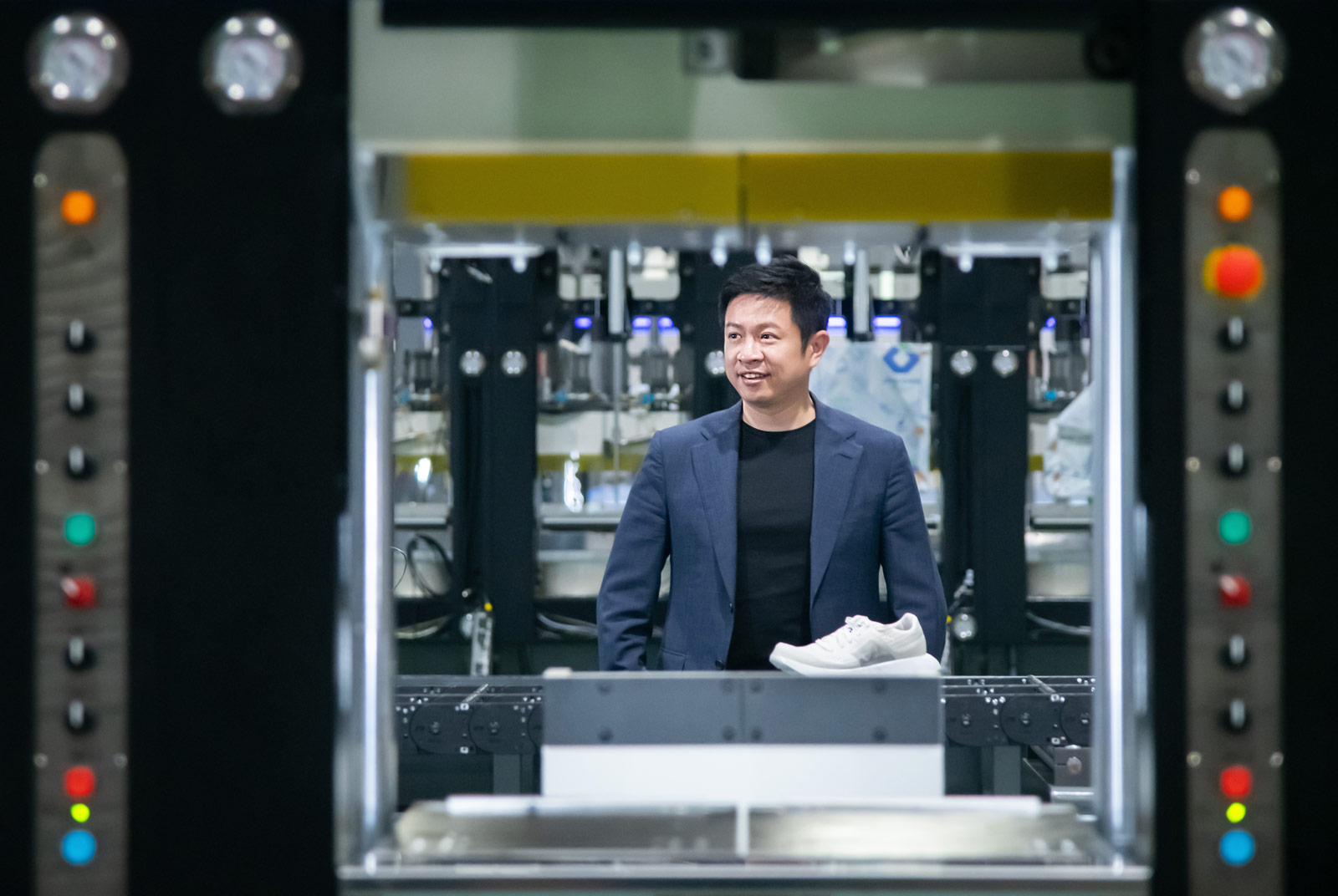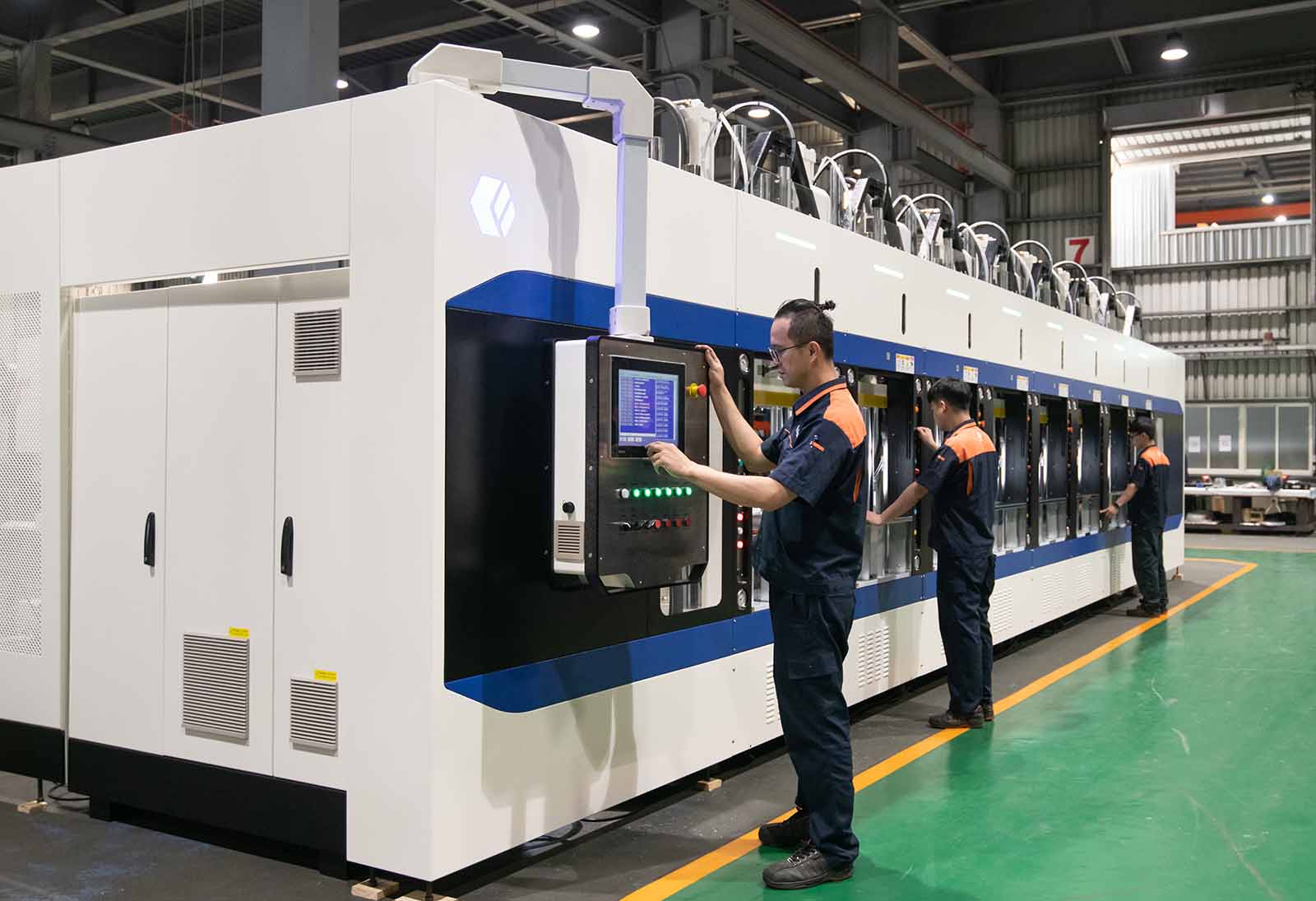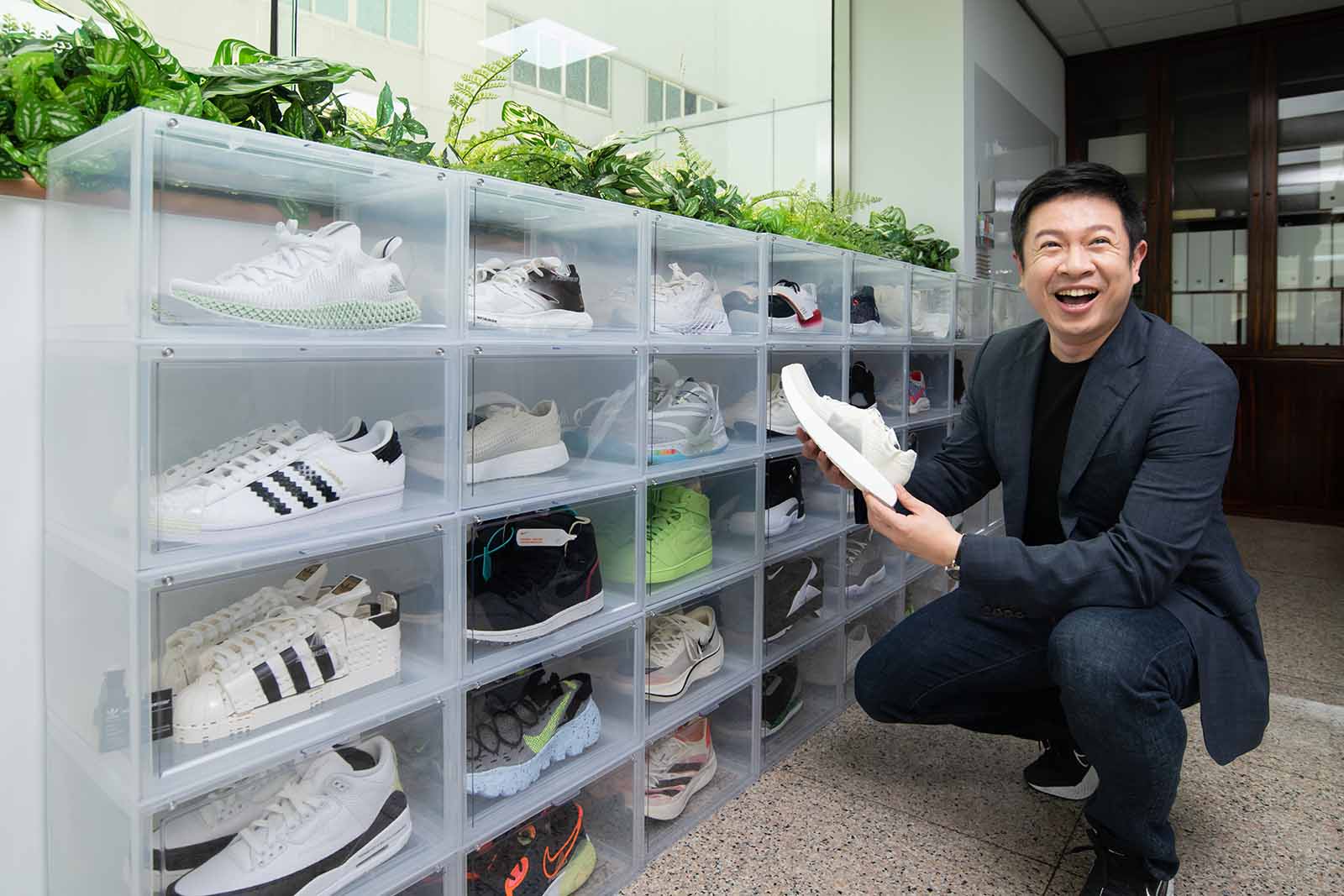The ‘hidden champion’ behind Nike and Adidas sneakers

Source:Ming-Tang Huang
The new CEO at the footwear equipment manufacturer King Steel got his work cut out for him: A ransomware virus shut down their computer system. Instead of backing down, he leaned in and accelerated the company’s digital overhaul.
Views
The ‘hidden champion’ behind Nike and Adidas sneakers
By Ching Fang Wuweb only
King Steel Machinery Co. is located in the Taichung Industrial Park in Xitun. Inside the CEO’s office is an entire cabinet of sneakers on display like trophies.
And indeed, every pair of shoes that CEO Jim Chen (陳璟浩) collects is a milestone in the art of footwear manufacturing.
“These are Adidas’s world-first 3D-printed sneakers,” “The Nike Space Hippie is made entirely from recyclables from the production line,” “This pair has the lowest carbon footprint of any Adidas sneakers.” Chen knows by heart which superstar shoes were made with equipment from his company.
Putting the world's sports on their feet
Whether it’s global sports brands like Nike, Adidas, Reebok, Puma, or Under Armour; or stylish foam clogs like Crocs; eight out of ten branded sneakers stand on midsoles manufactured by King Steel’s equipment.
Three decades ago, King Steel bested Italian competitors to become the world’s number one “invisible champion” of midsole manufacturing equipment. At its peak, King Steel was shipping 260 units of its machines on a yearly basis.
The midsole is the soul of sports shoes—pun very much intended. Branded footwear like to name their product lines after patented midsole tech. In 2013, Adidas launched Ultraboost, a line of sneakers with styrofoam-like midsoles. The name “Boost” came from a revolutionary kind of midsole material that Adidas developed with BASF.
When you’re traipsing about in your new pair of kicks, the sensation that reaches your feet comes from the shoes’ midsoles. For athletes, they can even enhance performance.
The midsole molding machine is often the first (and most expensive) piece of equipment that any footwear company has to buy. Prices range from millions to tens of millions of Taiwan dollars. When a brand launches a series of shoes based on a new midsole design, they are working closely with materials and equipment suppliers to put the right foot forward. That might mean around two dozen midsole molding machines per order, which is an investment in the hundreds of millions.
Many footwear brands also establish their own development centers and go around shoe manufacturers to work directly with the equipment suppliers; it’s seen as a way to maximize profits.
“Several big European brands told us, ‘Once the deal is inked, you come talk to us directly at our headquarters’,” says Chen. It shows that the role of equipment suppliers is evolving.
 The midsole molding machines (Source: Ming-Tang Huang)
The midsole molding machines (Source: Ming-Tang Huang)
The returning prodigy had big shoes to fill
Chen, 41, has only been back in Taiwan for four years. He had his own business in the United States: He used the family business’s molding machines to make solid tires for bicycles, and his customers included the bicycle-sharing program on the Google campus. But in 2016, he was contacted by his father—King Steel Chairman Francis Chen (陳法勝).
Even then, the younger Chen knew that the company was facing two looming crises.
The first one was that the staff was getting older: Many senior managers who watched him grow up were riding off into the sunset, but there was no one to fill their shoes. The second was that the capacity of the original mass production equipment was no longer enough to stay abreast of customer demand.
Footwear brands always want to diversify their product lines and wow consumers with the most unique collections. The sneaker business is becoming a niche market where speed and versatility are critical to success. At the same time, “economy of scale” is still in play. In other words, equipment manufacturers have to come up with highly flexible modularized processes that can be adjusted on the fly.
This drastically deepened the complexity of operations and management. But for Jim Chen, the answer was simple: Just do it.
His first order of business was to expand hiring. He added on 20% more workers and headhunted youngsters below 35 years of age. In the past, each production unit consisted of five to six workers who could put together any type of machine from scratch. With the introduction of new blood, the traditional units had to be broken down and redistributed along the assembly line. Now, every employee would specialize in one task.
People are easy to reprogram; machines, not so much. The company’s ERP system had not been changed in two decades. Head of digital transformation Jason Chien (簡光正), who has also been with King Steel for 20 years, recalls that many new lines of code had to be added to the old system so that it could support the new way of management.
 Jim Chen (Source: Ming-Tang Huang)
Jim Chen (Source: Ming-Tang Huang)
A virus and the change it wrought
In May of 2020, even as the COVID-19 pandemic ravaged the globe, another kind of virus—a malicious piece of ransomware—made its way into King Steel’s ERP system. The whole thing shut down.
Amid the chaos, Chen had a revelation: It was time to ditch the old ERP and employ cloud services provided by Microsoft. This decision would have lasting ramifications.
In the old days, the discovery of a defective product would have led to a ton of paperwork that may have taken anywhere from half an hour to several days to complete. With new technology, however, a photo of the defect can be shared across departments and analyzed instantaneously. This made the development of new products six times faster.
The new system also allowed for direct database concatenation, which expedited the process of amassing data. Best of all, this could be done without in-depth programming know-how. Needless to say, it was a shot in the arm for the younger batch of “digital native” employees.
In one instance, a greenhorn with no background in coding used the new digital tools to create a real-time visualization system for the production process—all within three months of coming onboard. The success story electrified the whole team.
“When the young people get together, they come up with projects,” says Chen. Chien says that beginning last year, King Steel enacted a policy of encouraging the internal development teams to improve the apps that everyone uses for work. As of today, 13 programs have gone online, covering everything from human resources to parcel deliveries.
In the research and development meetings held by Chairman Chen, participants may be too timid to speak up, so decisions might be made based on limited information. With the introduction of digital tools, young employees feel emboldened to propose solutions once the hard data is laid out in front of them. This is a virtuous cycle that can also benefit older employees. In effect, digitization has bridged the work culture generational gap.
All told, King Steel spent up to ten million in its investment in hardware and software transformation. It has signed contracts with Siemens, RuhYih Automation (如億自動化), Otsuka Information Technology, and other industry leaders to improve every aspect of manufacturing, from interconnecting the production process to 3D modeling.
Midsole recycling tech makes the Earth cleaner
In the wake of the global pandemic, sports brands are facing an excess of inventory and a shrinking market. Of course, this has had an effect on King Steel. Annual output is holding at around 150 to 180 units. In spite of this, research and development has not stopped.
Chen uses the latest running shoes by the renowned French outdoor sports equipment brand Salomon as an example: The midsoles in these shoes are made with the most advanced physical foaming technology. Unlike older foaming methods that required three separate machines in three different locations, the new procedure can be completed with a single machine.
“They are the trailblazers in this field of technology,” says Hsi-Hsin Shih (施希弦), senior manager at the TSRC Corporation, a materials provider that works with King Steel. Thanks to its digital transformation, King Steel can provide clients with real-time, on-demand service.
King Steel is using supercritical foaming technology in the midsole production process. This is a major trend in the future of midsole manufacturing. The foams are thinner than a human hair, and can provide wearers with exceptional athletic performance.
Even more importantly, the finished products can be 100% recycled. This solves the issue of most modern midsoles being unsuitable for recycling. Salomon is just a start—“One day, every brand will use it,” says Chen.
Have you read?
- AI medical records assistant Copilot
- Going global: Starlux’s mission impossible
- After 25 years, MIT batteries target land, air and sea
Translated by Jack Chou
Edited by TC Lin
Uploaded by Ian Huang






